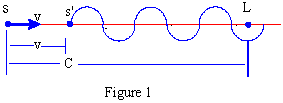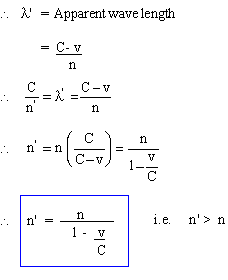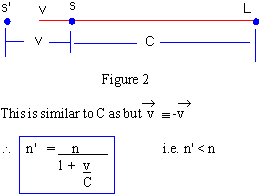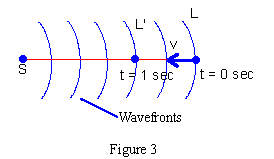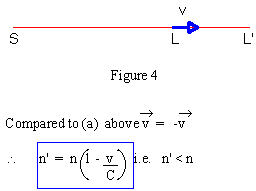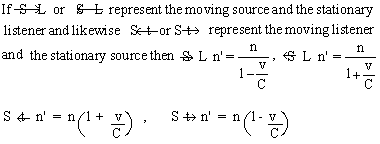|
10.2 Doppler Effect The apparent change in frequency of a sound wave, detected by an observer, in relative motion with respect to the source of sound waves, is called Doppler effect. For elastic or mechanical waves such as sound waves, in some material medium, the effect depends on whether the listener is moving towards the stationary source or the source is moving towards the stationary listener. This can be seen even though the relative velocity of motion between the listener and the source is the same. Source (S) in motion and Listener (L) at rest, relative to some fixed interval frame of reference..asp.asp.asp.asp.asp.asp.asp.asp (a) Source (S) moving towards the stationary listener (L).
Let
n : Frequency of Sound waves emitted by 'Source' S For convenience, we choose initial distance between S and L to be numerically equal to 'C', so that if S were stationary then all n waves emitted by source in 1 sec. will be received by L within interval of 1 sec. To the listener all the n waves emitted by the source appear to be compressed in the distance S'L = C - V, (b) Source (S) moving away from the stationary listener (L)
Source (S) stationary and listener (L) in motion, relative to some fixed reference frame (inertial) (a) Listener (L) moving towards the stationary Source (S)
If L were stationary then only x waves will be received in 1 sec, but as L is approaching S, the extra number of waves within distance V = LL' will be received therefore, the number of waves received by L in 1 sec. = n + number of waves in distance v.
(b) Listener (L) moving away from the stationary source (S)
Summary
|
10.1 Intensity and Pitch Follow @Pinkmonkey_com  |

